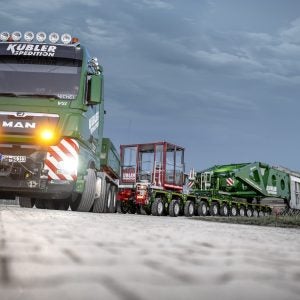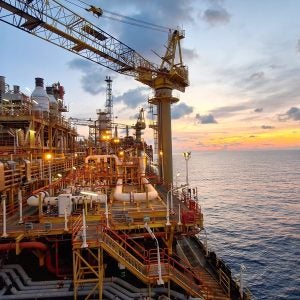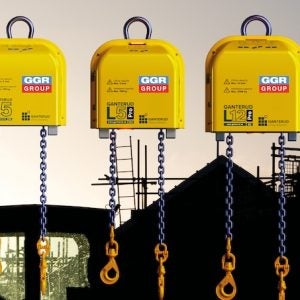Marine scientists at the University of Hawaii are using an ABB winch drive, installed on a ship by Canadian deck equipment manufacturer Hawboldt Industries, to help conduct water sample tests at depths up to 5,000 metres, even in rough seas.
The ACS880 winch drive is mounted on the Kilo Moana – a 60-metre Small Waterplane Area Twin Hull (SWATH) ship owned by the US Navy and operated by the University of Hawaii’s Marine Centre. The oceanographic research vessel enables scientists to conduct tests to increase their understanding of the effect of deep ocean currents on marine life and climate change.
The tests involve lifting and lowering a package with sensors and water sample bottles, weighing around 900 kg, from the ship’s deck into the water using its Launch and Recovery System (LARS). The LARS was upgraded to a new design with active heave compensation (AHC) in 2019, which takes information on wave action from the vessel’s motion reference unit and adjusts the winch motors to compensate. According to ABB, precise adjustments in winch tension are made hundreds of times per second to keep the package steady in relation to the seabed as the vessel pitches up and down.
Trials were conducted in 2020 and the system is now in use.
According to Dylan Wells, general manager of Hawboldt Industries, AHC is essential in the university’s water testing work, minimising cable tension spikes and allowing the package to take samples safely and reliably in rough conditions (when waves can be as high as four metres and there are significant vessel roll, pitch, and heave motions).
According to ABB, the AHC enables faster yet more controlled deployment by keeping a more consistent cable tension thus eliminating slack conditions and tension spikes. A slack cable can also get hockled (tied in knots) which can result in major damage requiring replacement of the long cable, meaning high costs for replacement equipment and lost ship time.
“A winch drive is an integral element in our equipment and the ABB ACS880 drive is unique because it comes with AHC functionality built-in as firmware,” explained Wells. “Therefore, we didn’t need to change the system architecture or deal with the cost and complexity of installing an external, third-party AHC control system. With the ABB drive all we needed to do was to connect it to the MRU and switch it on.”
“Taking water samples is a primary element for the Kilo Moana with a cost of around $50,000 to run each day at sea,” added Scott Ferguson, University of Hawaii director for marine technical service. “If we can’t work because the sea is too rough then we face a major loss of revenue. The advantage of our new crane with AHC is that it enables tests to be carried out with safety and precision even when waves are four metres high. That’s why our scientists love it, while our deck crew appreciates it because of its reliability and ease of operation.”






